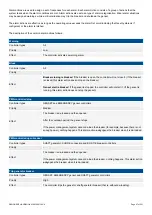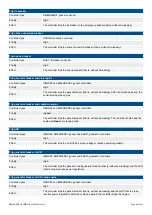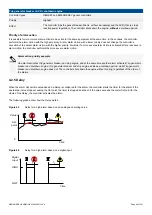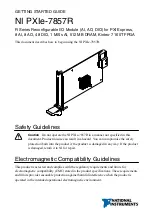
More information
See
Alarm handling
later in this chapter for more information.
Alarm latch
An additional layer of protection can be added by using a
Latch
on most alarms.
When a
Latch
is enabled on an alarm, an extra confirmation must be made by the operator, before the alarm can be cleared. The
alarm action remains active, even if the
Alarm condition
clears, until the operator resets the latched alarm.
INFO
A latched alarm can only be reset after both the alarm has been acknowledged and the
Alarm condition
has cleared.
Acknowledging the alarm does not
Reset
the alarm latch.
•
An acknowledged alarm, that has no latch enabled, clears from the alarms list if the alarm condition clears.
•
An acknowledged alarm, that has a latch enabled, does not clear from the alarms list even if the alarm condition clears.
◦
The operator must
Reset
(unlatch) the alarm to clear the alarm from the alarms list.
◦
The alarm action remains active until the alarm is reset.
More information
See
Alarm handling, Latch reset
later in this chapter for more information on the operator action.
Operator actions
Operators can perform different actions to change the alarm state. Typically acknowledging an alarm. The operator actions are
described in more detail in the
Alarm handling
section in this chapter.
INFO
Operator actions can be done by using the display unit, a digital input, PICUS, Modbus and/or CustomLogic.
4.1.2 Alarm levels
Alarm levels refers to configuring a number of alarms for one reference value. For each alarm level, the
Set point
,
Time delay
,
Action
and other parameters are configured.
Example of alarm levels
The following graph shows the busbar voltage alarms that are present by default, that is,
Busbar over-voltage 1
,
Busbar over-voltage
2
,
Busbar under-voltage 1
and
Busbar under-voltage 2
.
DESIGNER'S HANDBOOK 4189340911K UK
Page 92 of 521
















































